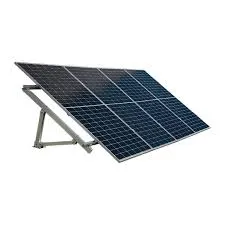Exploring the Benefits and Applications of Bifacial Solar Panels in Modern Energy Solutions
The Rise of Bifacial Solar Panels A Game Changer in Renewable Energy
As the global push for renewable energy intensifies, solar technology continues to evolve, offering innovative solutions that maximize efficiency and lower costs. One of the most promising advancements in solar technology is the emergence of bifacial solar panels. Unlike traditional monofacial panels, which only capture sunlight from one side, bifacial panels are designed to harness sunlight from both their front and rear sides, leading to improved energy output and efficiency.
Understanding Bifacial Solar Panels
Bifacial solar panels are constructed with photovoltaic cells on both sides and often feature a transparent back sheet, allowing light to enter from both angles. This design enables the panels to capture direct sunlight as well as reflected light from surrounding surfaces, such as the ground, buildings, or nearby water bodies. The amount of additional energy generated through this dual light capture can significantly enhance the panel’s overall performance.
The amount of extra energy a bifacial panel can produce varies based on several factors, including the albedo (reflectivity) of the surface beneath the panel and the panel's tilt angle. For example, light-colored or reflective surfaces can increase the amount of light hitting the rear side of the panel, thus boosting its efficiency. Studies have shown that bifacial panels can achieve energy production increases of 10% to 30% compared to traditional panels in optimal conditions, making them an attractive option for residential, commercial, and utility-scale solar installations.
Benefits of Bifacial Panels
The transition to bifacial solar panels comes with numerous advantages
1. Higher Energy Yield As mentioned, bifacial panels can capture more light and, subsequently, produce more energy. This increased yield can lead to a lower cost per watt for the energy produced, making solar power more commercially viable.
2. Durability and Longevity Many bifacial panels are built with glass on both sides, making them more resilient to environmental stressors compared to traditional panels, which often have a polymer back sheet. This durability can translate to longer lifespans and less frequent replacements, further enhancing overall cost-effectiveness.
bifacial panels

3. Flexible Installation Options Bifacial panels can be installed in various configurations, including elevated structures that allow light to reflect from beneath. This flexibility enables solar installations even in constrained spaces and can be particularly useful in urban environments.
4. Lower Land Use The higher efficiency and energy yield of bifacial panels mean that fewer panels may be required to achieve the same output as monofacial panels, reducing land use for solar farms and maximizing the utility of available space.
5. Environmentally Friendly By generating more electricity from the same area, bifacial solar panels can contribute to reducing reliance on fossil fuels, lowering carbon emissions, and promoting sustainable energy practices.
Challenges to Consider
Despite their advantages, bifacial solar panels are not without challenges. The initial investment can be higher than that of traditional panels due to the technology involved. Additionally, optimal performance often depends on environmental conditions, such as surface reflectivity and installation orientation. Therefore, careful site assessment is critical to maximize the benefits of bifacial technology.
The Future of Bifacial Solar Technology
As ongoing research and development continue to refine bifacial panel technology, it is highly likely that their adoption will accelerate in the coming years. Governments and businesses worldwide are increasingly recognizing the potential for bifacial panels to contribute to energy transition goals and reduce costs associated with solar energy deployment.
In conclusion, bifacial solar panels represent a significant step forward in solar technology. By capturing sunlight from both sides and delivering higher energy yields, these panels not only enhance the effectiveness of solar power installations but also contribute to a more sustainable and renewable energy landscape. As the world moves toward cleaner energy solutions, bifacial solar panels are poised to play an essential role in shaping the future of solar energy.
-
String Solar Inverter: The High-Efficiency Solution for Smart Solar EnergyNewsJul.14,2025
-
Revolutionizing Rooftop Energy with the Power of the Micro Solar InverterNewsJul.14,2025
-
Power Independence with Smart Off Grid Solar Inverter SolutionsNewsJul.14,2025
-
On Grid Solar Inverter: Powering the Future with Smart Grid IntegrationNewsJul.14,2025
-
Monocrystalline Solar Panels: High-Efficiency Power for the Future of Clean EnergyNewsJul.14,2025
-
Bifacial Solar Panel: A Smarter Investment for Next-Generation Energy SystemsNewsJul.14,2025







